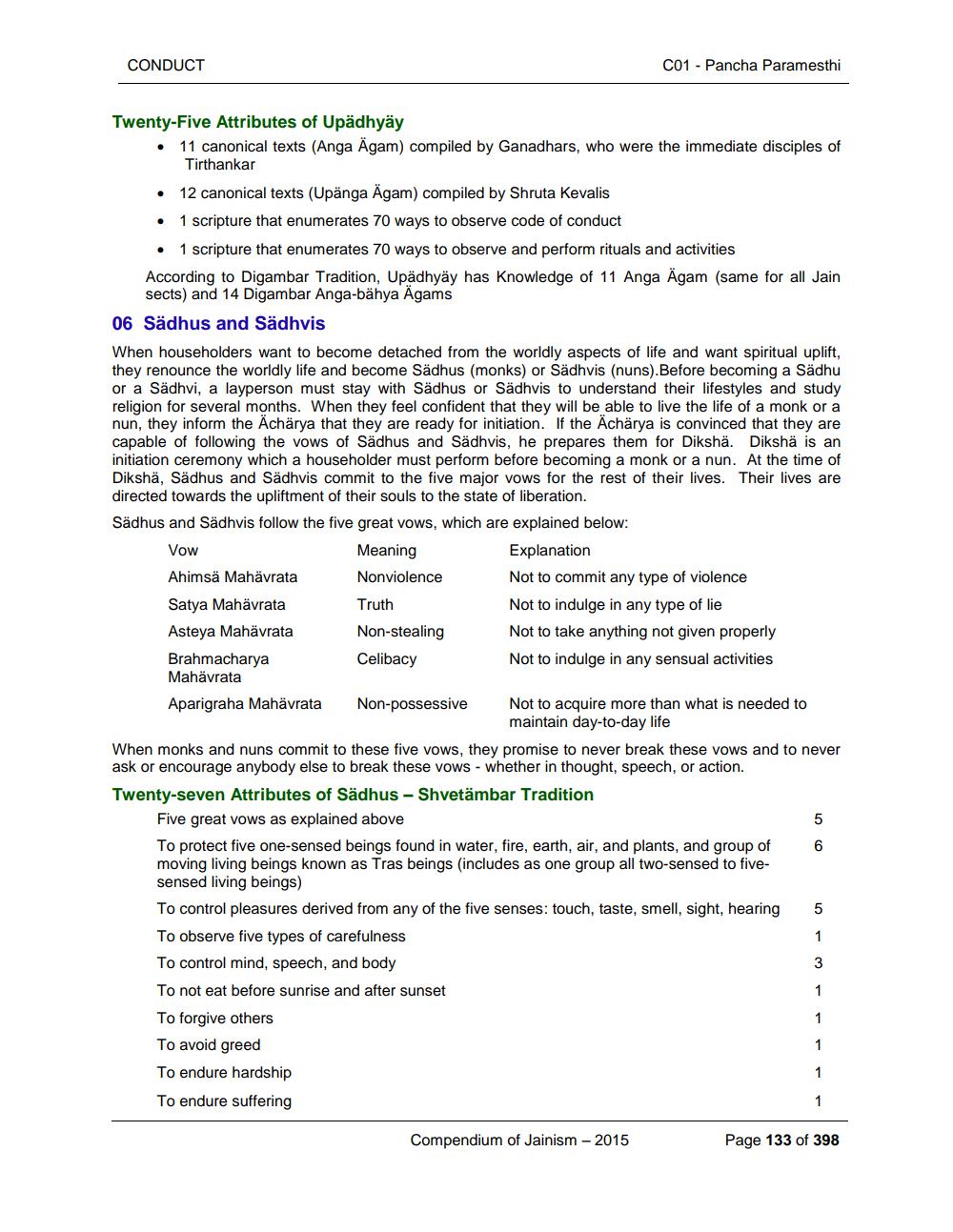________________
CONDUCT
C01 - Pancha Paramesthi
Vow
Twenty-Five Attributes of Upadhyay • 11 canonical texts (Anga Agam) compiled by Ganadhars, who were the immediate disciples of
Tirthankar • 12 canonical texts (Upanga Agam) compiled by Shruta Kevalis • 1 scripture that enumerates 70 ways to observe code of conduct
• 1 scripture that enumerates 70 ways to observe and perform rituals and activities According to Digambar Tradition, Upadhyay has knowledge of 11 Anga Agam (same for all Jain
sects) and 14 Digambar Anga-bähya Agams 06 Sädhus and Sadhvis When householders want to become detached from the worldly aspects of life and want spiritual uplift, they renounce the worldly life and become Sädhus (monks) or Sädhvis (nuns). Before becoming a Sädhu or a Sadhvi, a layperson must stay with Sädhus or Sädhvis to understand their lifestyles and study religion for several months. When they feel confident that they will be able to live the life of a monk or a nun, they inform the Acharya that they are ready for initiation. If the Acharya is convinced that they are capable of following the vows of Sädhus and Sadhvis, he prepares them for Dikshä. Dikshä is an initiation ceremony which a householder must perform before becoming a monk or a nun. At the time of Dikshä, Sädhus and Sadhvis commit to the five major vows for the rest of their lives. Their lives are directed towards the upliftment of their souls to the state of liberation. Sädhus and Sadhvis follow the five great vows, which are explained below:
Meaning
Explanation Ahimsä Mahävrata Nonviolence Not to commit any type of violence Satya Mahävrata
Truth
Not to indulge in any type of lie Asteya Mahävrata Non-stealing Not to take anything not given properly Brahmacharya
Celibacy
Not to indulge in any sensual activities Mahävrata Aparigraha Mahävrata Non-possessive Not to acquire more than what is needed to
maintain day-to-day life When monks and nuns commit to these five vows, they promise to never break these vows and to never ask or encourage anybody else to break these vows - whether in thought, speech, or action. Twenty-seven Attributes of Sädhus - Shvetämbar Tradition
Five great vows as explained above To protect five one-sensed beings found in water, fire, earth, air, and plants, and group of moving living beings known as Tras beings (includes as one group all two-sensed to fivesensed living beings) To control pleasures derived from any of the five senses: touch, taste, smell, sight, hearing To observe five types of carefulness To control mind, speech, and body To not eat before sunrise and after sunset To forgive others To avoid greed To endure hardship To endure suffering
5
Compendium of Jainism - 2015
Page 133 of 398




